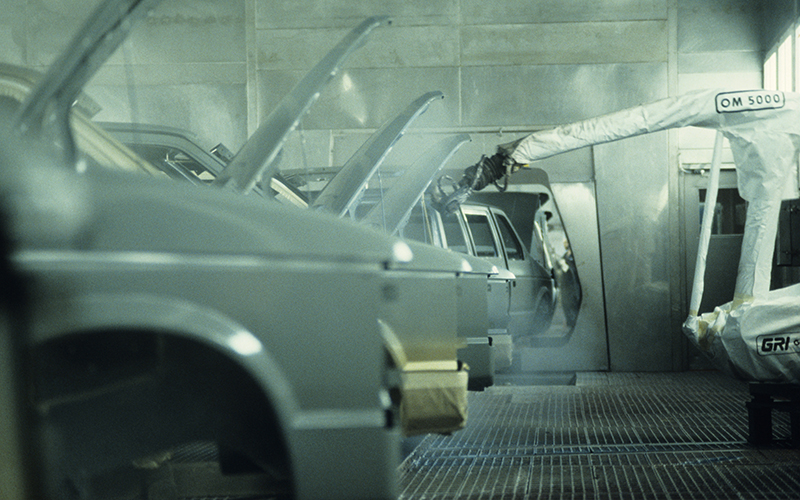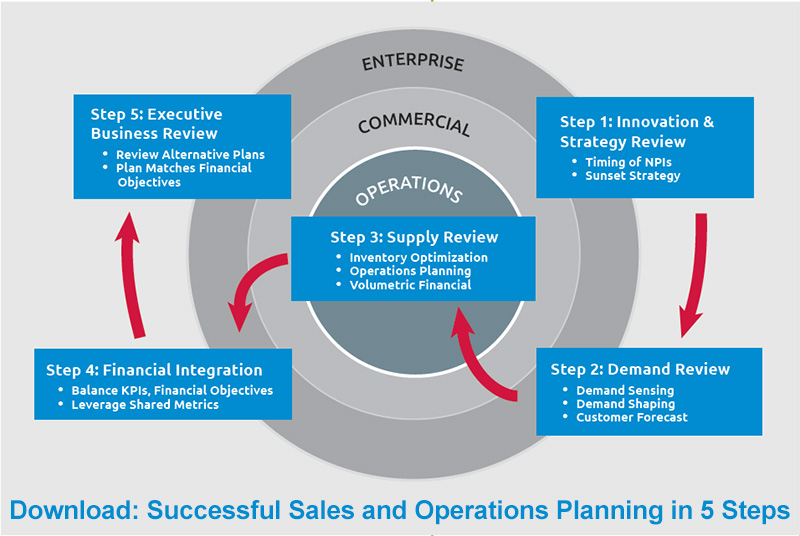S&OP Myths Part 5 – Lean and On-Demand Manufacturing

This is the fifth post in a series where we investigate some of the myths and mistruths around Sales & Operations Planning (S&OP).
In the previous posts we have looked at the misdirected focus on historical information, the belief spreadsheets can support a robust S&OP process, the “S&OP is too rigid argument” and the idea that S&OP is a real-time response planning process; today we are going to look at lean manufacturing.
Myth: “No Need for S&OP; We have Lean Manufacturing.”
Some proponents of lean manufacturing believe that if you are running lean processes where you have eliminated waste, raw and work in process (WIP) inventory will be delivered and used just-in-time (JIT) to meet customer demand. In this scenario, the belief is you won’t need to align supply with demand. Raw and WIP inventory takes time to procure, build and transport.
This is a fact you cannot get around. Often the time a customer is willing to wait for an order (Order Lead Time) is much shorter than the time it takes to produce that order (Production Lead Time).
This mismatch in lead times requires shorter term S&OP. Taking a longer term focus (greater than a few months) S&OP is used to ensure future capacities both internal and external can be available to meet projected demand.
Production and distribution facilities take time to build. It takes time to bring new suppliers and distribution partners on-line. Lean manufacturing will not help you solve these lead time mismatch issues and longer term planning problems.
Reality: “S&OP and Lean are two very different but necessary aspects of a high performance supply chain.”
S&OP is a medium-to-long (12-36 month horizon) term planning tool that provides visibility into the future, thereby avoiding surprises when demand shifts – up or down. People who know both S&OP and Lean say, “They work best when they work together.”
Lean is all about creating a physical environment that will enable material to flow from raw material to finished product and through to the customer in an efficient and cost-effective manner. Doing this means eliminating waste and wasteful practices, reducing costs and cutting lead times while synchronizing all partners and activities in the value-chain.
Sales and Operations Planning is a business process and operating culture enabled by a solution to help balance and align future demand and supply, predict capacity and material problems with enough time to do something about them, and understand the financial consequences of production and purchasing decisions.
A recent trip to the optometrist provided insight into the relationship between S&OP and Lean. I was informed by my optometrist that my eyesight is at the point where I need different lenses for near and far sight. To get to 20/20 vision I, like many people of my age, require more than just mere glasses or contacts. Since I already wear contacts my choices to fix this problem were to wear reading glasses or my preference to wear different contact prescriptions in each eye one for close up and one for distance.
Just like my need for different lenses to have 20/20 vision a business needs different tools to effectively manage near term and longer term business issues. Businesses need the ability to focus on the horizon to anticipate and plan for changes (S&OP) and they also need the ability to focus up close to efficiently execute manufacturing and supply chain operations (Lean).
Sales & Operations Planning provides vision to identify demand and supply issues far into the future while Lean allows companies to focus on removing waste throughout their extended operations and providing their customers with the best value.
S&OP and Lean are both as important and mutually complimentary to business vision and success as my two different but similar contact lenses are to my vision and success.
If you create a manufacturing environment where material flows with minimum waste (Lean), but you can't predict capacity and material availability problems in enough time to avoid them (S&OP), you will most likely revert to firefighting, finger-pointing and poor results.
Similarly, if you do an excellent job of future planning but have poor flows, you can almost count on higher inventory levels, longer lead times, and lower profitability. By combining S&OP and Lean, organizations can rationalize supply chain assets based on clean demand signals and prevent unnecessary supply chain expenditures.
What myths or untruths have you heard about S&OP?
Related: S&OP Myths Part 4 – Spreadsheets are King 
Article Topics
Logility News & Resources
Logility makes entrance into supply chain-focused AI, with acquisition of Garvis Logility Acquires Generative AI Supply Chain Planning Firm Garvis Supply chain software platforms help to level the playing field Logility to acquire supply chain network optimization vendor Starboard Solutions Logility partners with Körber to expand capabilities How Does IKEA’s Inventory Management Supply Chain Strategy Really Work? This is Not Your Father’s Inventory Optimization More LogilityLatest in Supply Chain
TIm Cook Says Apple Plans to Increase Investments in Vietnam Amazon Logistics’ Growth Shakes Up Shipping Industry in 2023 Spotlight Startup: Cart.com is Reimagining Logistics Walmart and Swisslog Expand Partnership with New Texas Facility Nissan Channels Tesla With Its Latest Manufacturing Process Taking Stock of Today’s Robotics Market and What the Future Holds U.S. Manufacturing Gains Momentum After Another Strong Month More Supply Chain














